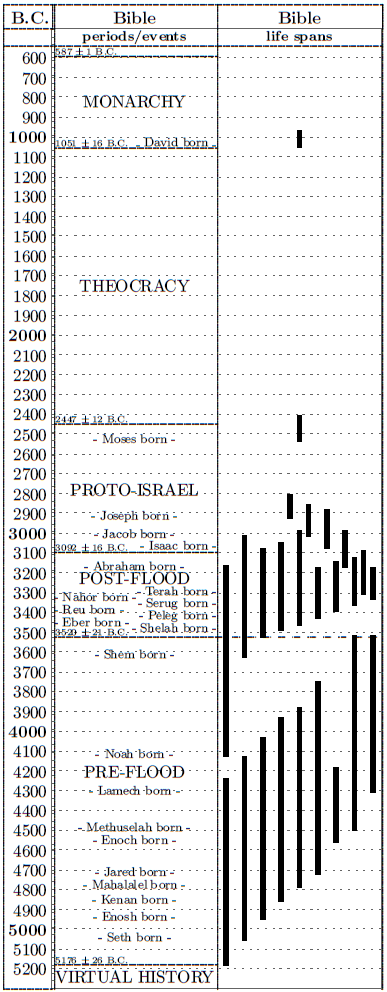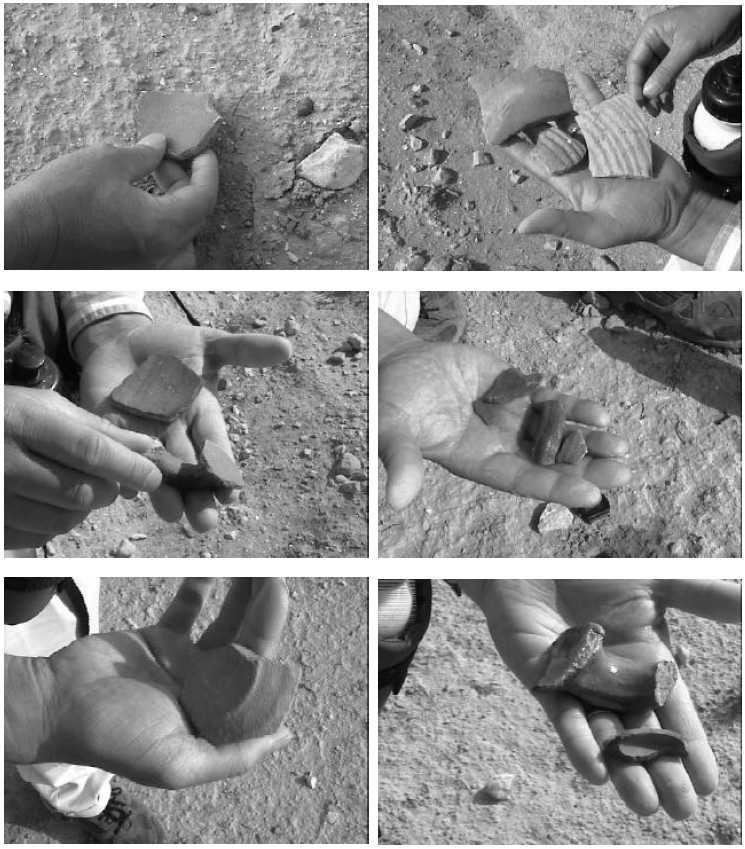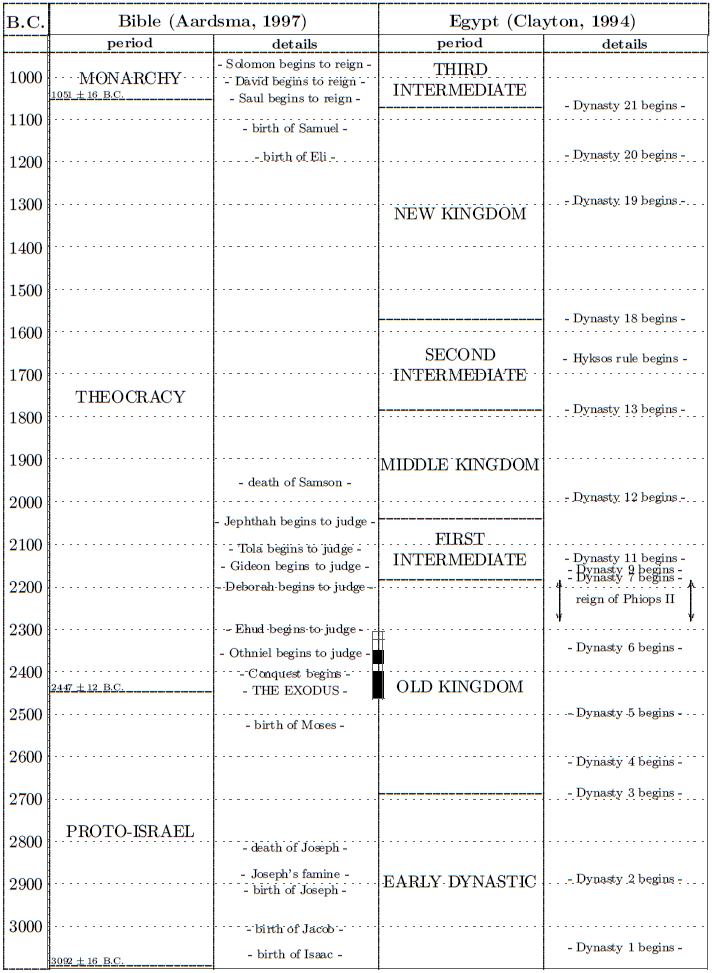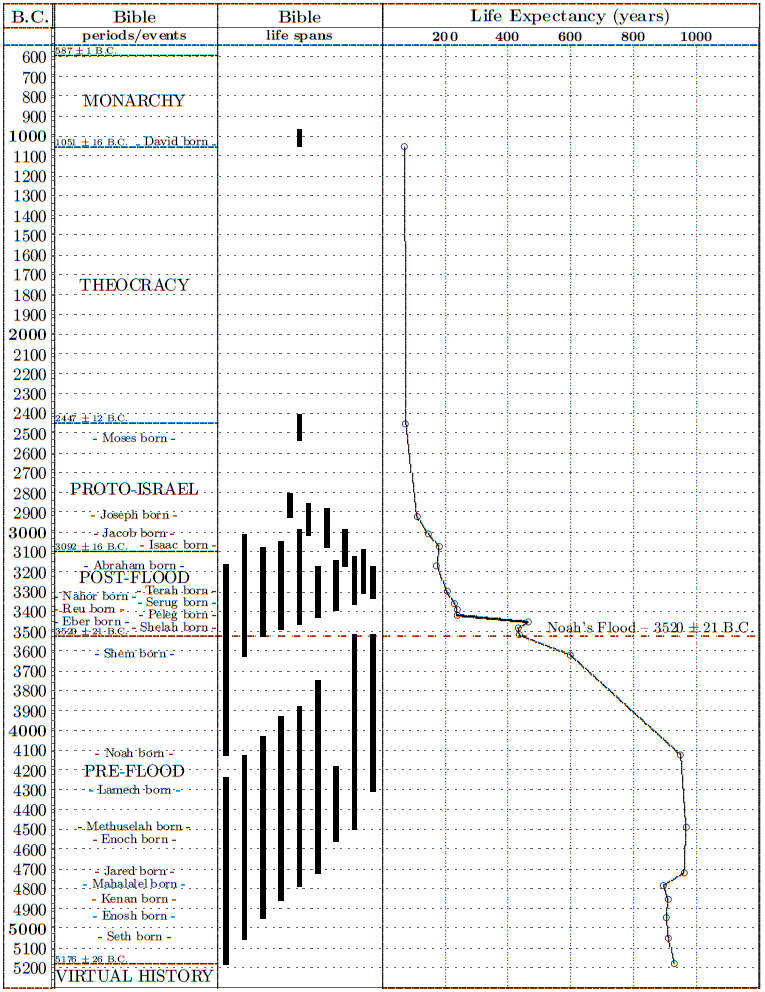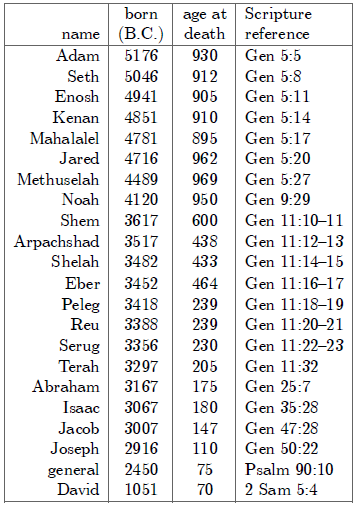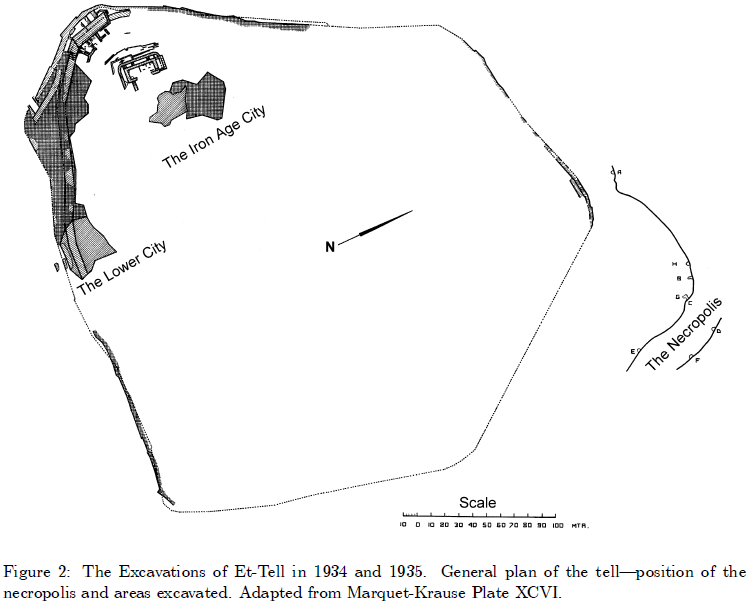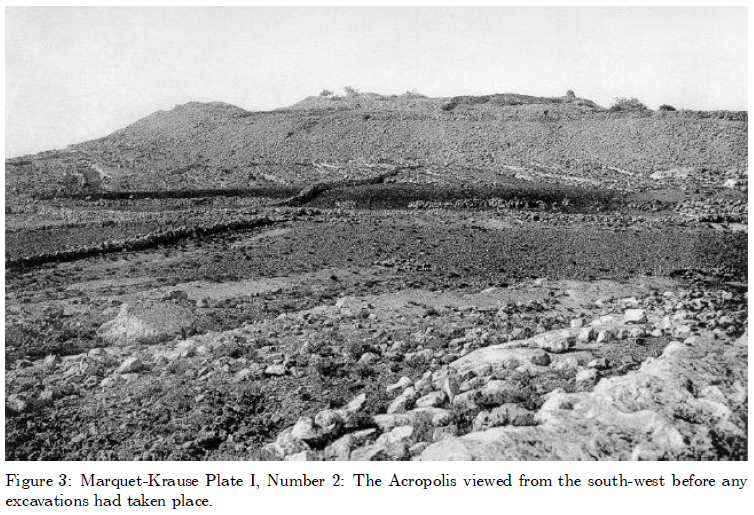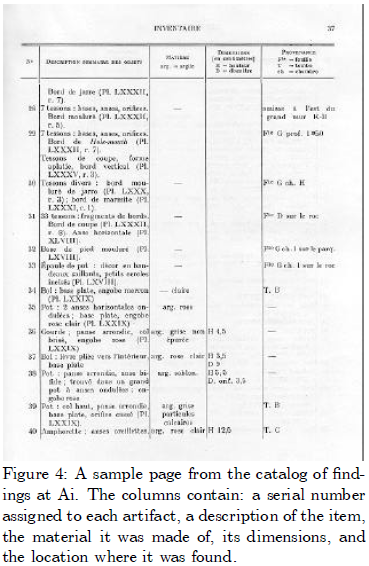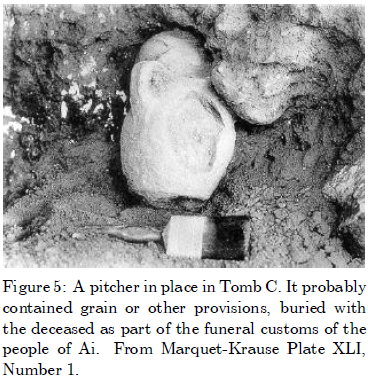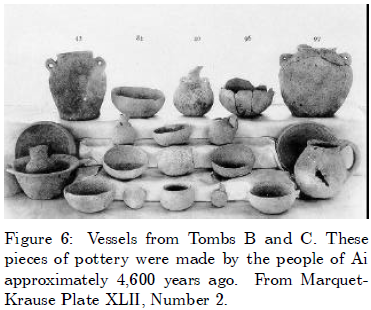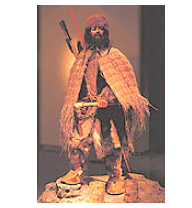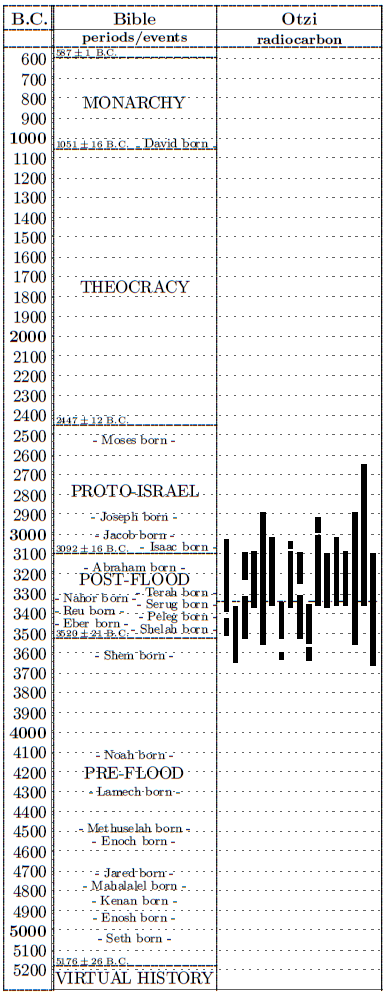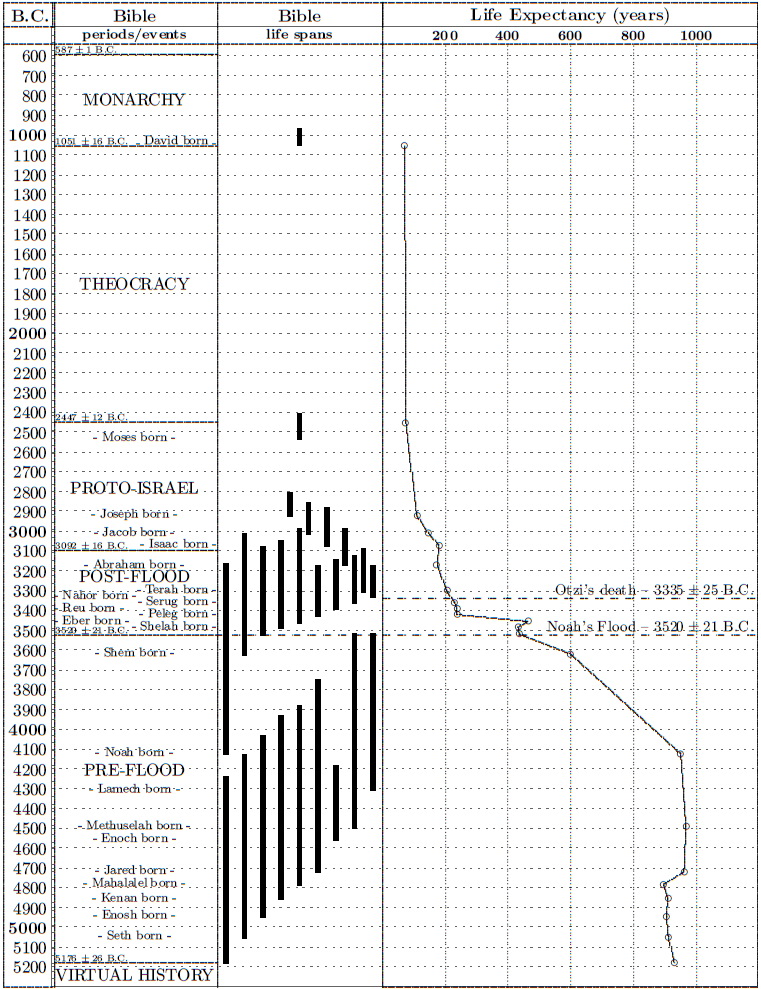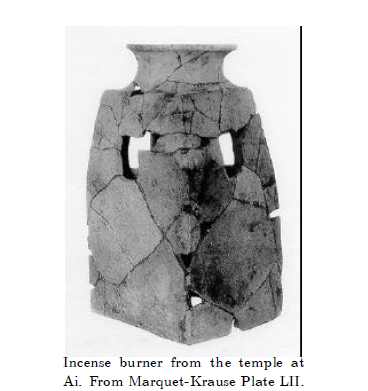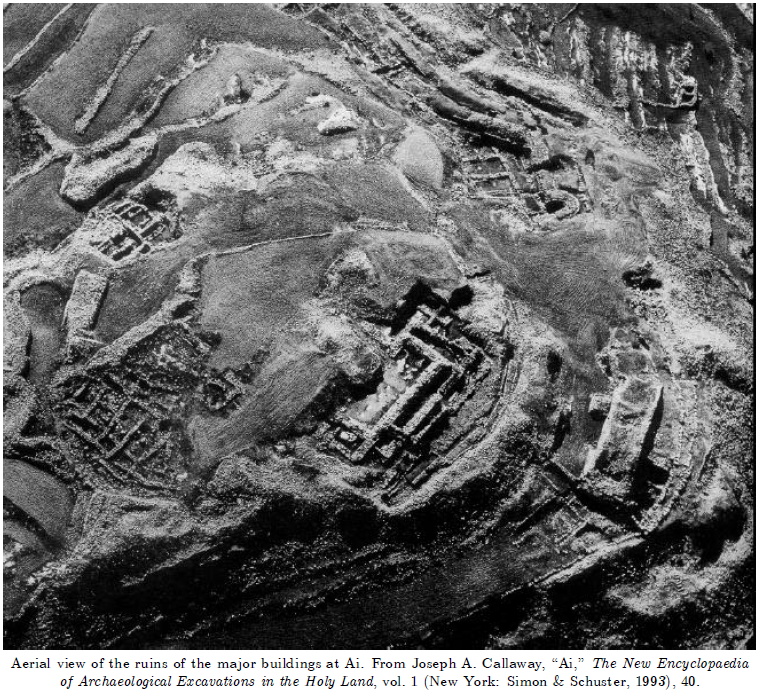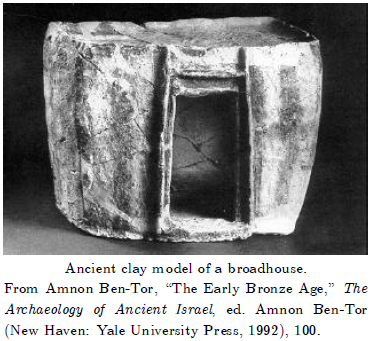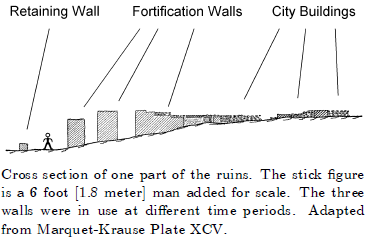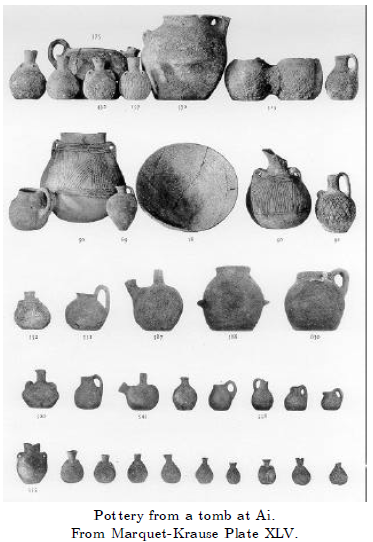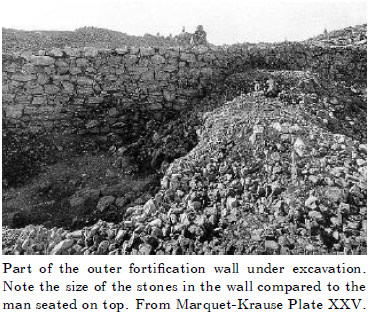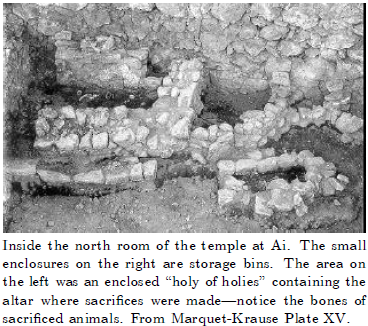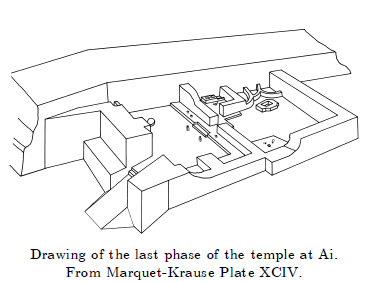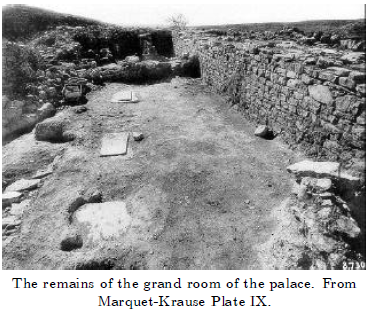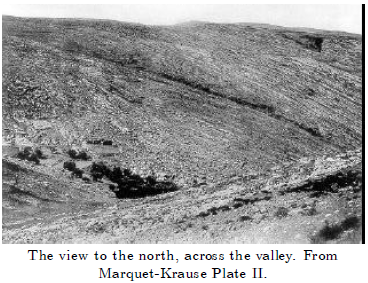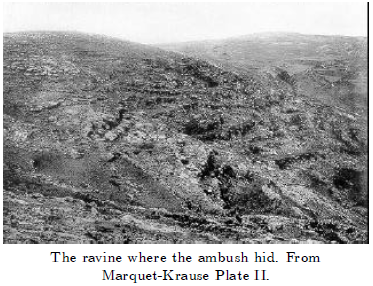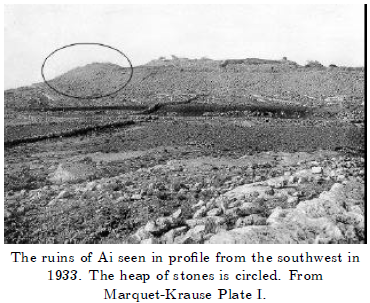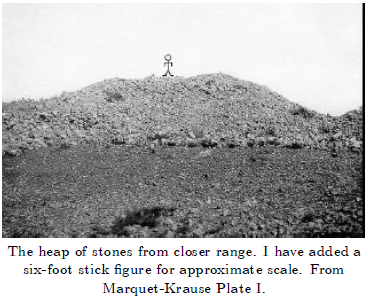 |
| Volume 8, Number 6 | November/December 2002 |
The Origin and Antiquity of the Biblical Text
I do not think that there is in the Hebrew Bible written material that can be proven to be earlier than the ninth or eighth century [B.C.], except for vague memories, myths and folk tales.[1]
– Israel Finkelstein (Biblical archaeologist)
My thesis in the present article contrasts sharply with the accepted viewpoint of many modern scholars regarding the origin and antiquity of the Biblical text. As the quote above illustrates, many modern scholars believe that the text of the Old Testament does not contain written material composed earlier than 1200 B.C., at the outside—Finkelstein (above) would lower this to 900 B.C. My thesis is that the text of the Old Testament contains historically accurate written material the origin of which dates back to at least 3500 B.C.
To Lay Christians
Before I begin to discuss how it is that I come to this view, I need to say a word about the whole subject of the composition and transmission of the Bible. In my experience, few lay Christians have studied the question of how we got our Bible. Some seem to work from a tacit assumption that God handed Adam a finished Bible on Day 6 of Creation Week. I do not wish to offend such brothers and sisters with the present article. My main purpose, as usual, is to defend the historical integrity of the Bible against unwarranted attack, not to challenge lay Christian views of its origin. But, as many lay Christians are likely to read this article, some groundwork is necessary at this point.
A little deliberate thought on the matter reveals that the Bible could not have been delivered by God fully composed. The Bible contains a great deal of historical narrative, and most of this historical narrative gives the impression of having been composed by contemporaries of the events described. For example, John writes in 1 John chapter 1 verses 1 and 3, "what we have heard, what we have seen with our eyes, what we beheld and our hands handled… what we have seen and heard we proclaim to you also". But if the Biblical historical narrative was composed by individuals who were contemporaries of the events described, then this historical narrative could not have been composed until after the events it describes had taken place. This leads immediately to the conclusion that there could have been no New Testament until after the birth of Christ. Similarly, there was no Biblical account of the Exodus prior to the Exodus, and no account of the Flood prior to the Flood.
The Bible has come to us through a process of composition which took place over many millennia. My view—normative to conservative Christianity—is that the events the Bible narrates were recorded by individuals who were contemporaries of those events, having access to first-hand knowledge of them—as we have just seen was the case with John.
This view does not exclude the possibility these first-hand reports were edited at a later date. For example, the book of Genesis, in which the description of the Flood is found, is generally credited by conservative scholars to Moses—indeed the Bible itself seems to allow no other possibility. Moses was born hundreds of years after the Flood. My view—normative to conservative Christian scholarship—is that Moses, under the inspiration of God, compiled and edited the Genesis account of the Flood, working from much earlier, written materials which had been originally composed by one or more eye-witnesses to the Flood event.
To this I would add that there seems significant evidence of a general updating of many of the place names, units of measure, and so forth of the Old Testament sometime in the first millennium before Christ. I have previously pointed out, for example, that "Ai" means "ruin", and that it is very unlikely the Canaanites called their city "Ruin". Rather, we may expect that it was the Israelites who, with the passage of many years, came to call the broken-down remains of this second city of the Conquest "the ruin"—"Ai". This is like the New King James Bible updating place names, units of measure, and so forth of the original King James to render it more comprehensible and less prone to misunderstanding by modern readers. It is important to be aware of the possibility of a general updating of the Old Testament in the first millennium before Christ because the evidence for this is frequently misconstrued by modern scholars as evidence for wholesale composition of much of the Old Testament in the first millennium before Christ. Because place names, units of measure, coinage … and even the meaning of words change with time, we may expect such updating to have been necessary probably on more than one occasion.
The Argument
The argument in defense of my thesis is really very simple. It is a personal argument, however, not shared by Bible scholars in general at the present time. My study of the Genesis Flood account, as a physicist, has given me a unique perspective on this ancient narrative. From this perspective it presently seems about as certain as a thing can be that the Biblical Flood narrative cannot be anything other than a first-hand, eye-witness record of the phenomenal events it describes. Since the date of the Flood is 3520±21 B.C., I find the conclusion inescapable that the Bible contains written material at least as old as 3500 B.C.
Eye-witness Details of the Flood
Figure 1: A hot gas jet from the impact crater propels the solid earth downwards. The oceans and inner core tend to stay behind because of inertia. (Not to scale; conceptual only.)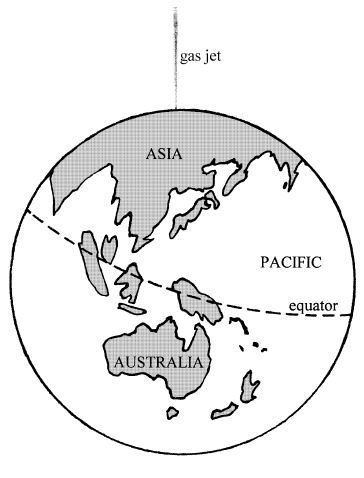 |
Much of my work as a scientist, since university days, has centered around Noah's Flood. A firm conviction has grown up and ever strengthened in me during these decades of study that nobody could possibly have concocted the Biblical Flood story. The fundamental reason for this is that the Flood event, as it is given in Genesis, is explicable on strictly scientific grounds, but the basic science which renders it explicable has only come to be known to mankind in the past century.
Figure 2: Most of the northern hemisphere winds up entirely under water, while ocean basins of the southern hemisphere run dry. (Not to scale; conceptual only.)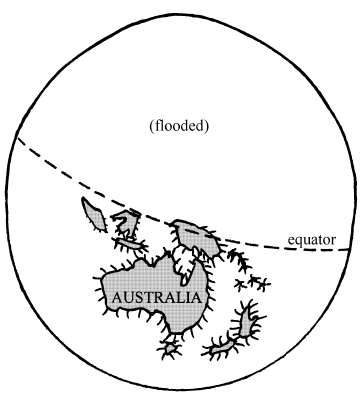 |
I have previously shown that the Flood can be explained scientifically as the result of a collision with earth, in the high northern latitudes, of a very high speed cosmic projectile.[2] Upon impact both projectile and target mass were ejected at very high velocity from the impact center back into space.[3] This, in turn, propelled the earth, altering slightly the inclination of its orbit about the sun. The acceleration of the earth, during this propulsion, displaced both the water of the oceans and the inner core of the earth northward, toward the impact center, because of their inertia. This displacement to the north of the water of the world oceans was what Noah experienced as the Flood.
It is possible today, based on what we know of the volume of water in the oceans and the size and distribution of the continental land masses, as well as the size and mass of the inner and outer cores of the earth, to calculate the depth of the water at any given point on the globe which would result from such an event. One finds that the water is deepest at the impact center and reduces monotonically away from the impact center.
Figure 3: Maximum Flood depth persists for roughly 150 days as the inner core is held pinned against the mantle by a rising plume of outer core fluid. The fluid was set in motion by the displacement of the inner core through it. (Scale diagram.)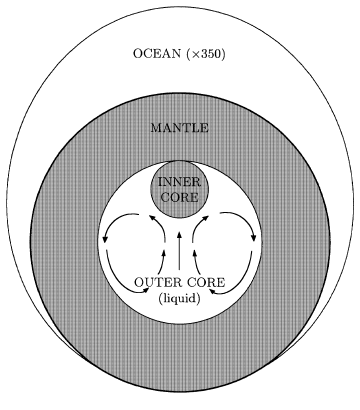 |
The depth the water achieves at the impact center depends on how far the inner core of the earth moves toward the north. The displacement of the inner core toward the north produces a gravitational anomaly at the surface of the earth, which attracts and holds the water. As the inner core moves further toward the north, more and more water is attracted and held in the northern hemisphere. The displacement of the inner core and the depth of the water are rigorously coupled through Newton's Law of Gravitation.
This coupling is rather demanding—one cannot get just any depth of water for the Flood one pleases. Specifying the displacement of the inner core completely determines the depth of the Flood at every point on the globe.
Now it turns out that the maximum displacement of the inner core is, in fact, specified (i.e., pre-determined) by a physical constraint. The constraint is that the (solid) inner core of the earth cannot penetrate the (solid) mantle of the earth. The inner core of the earth can be displaced from its normal central position up through the liquid outer core (given sufficient energy), but further displacement is necessarily halted when the solid inner core meets the solid mantle. Thus there is a maximum possible displacement of the inner core, and this maximum displacement defines an absolute maximum limit on the depth the Flood could have attained at any location on the earth.
Now it further turns out that the Genesis narrative of the Flood records (somewhat inadvertently) the maximum depth of the Flood. It tells us that the water finally began to recede 150 days after the start of the Flood, and on this same day the ark came to rest in the mountains of the Ararat region. It is possible to deduce from the Biblical text which mountain in the Ararat region the ark landed on; I have previously shown this to be Mount Cilo.[4] The known altitude of the summit of this mountain today gives us what must be a very good approximation of the actual maximum depth of the Flood at that location on the globe.
Taking Iceland as the impact center, as now seems mandatory,[5] yields the remarkable result that the maximum depth of the Flood in the Ararat region which is demanded by Newton's Law of Gravitation and the known maximum possible displacement of the inner core, agrees, within calculation uncertainties of roughly ±10%, with the actual measured maximum depth of the Flood in the Ararat region based upon the landing place of the ark recorded in Genesis.
Historicity
Over five years ago, when I first discovered and announced that the Flood was explicable in terms of a cosmic projectile impact, I mentioned briefly the implication for Biblical historicity in the following words:[6]
It seems appropriate to pause for a moment here and reflect on just one thing. It now seems pretty clear that we have discovered that the Biblical Flood narrative is comprehensible in terms of displacement of the inner core of the earth. But what is most striking about this discovery is that it means that the existence of a solid inner core and a liquid outer core of the earth is embedded in and presupposed by the Biblical Flood narrative. Noah's observations cannot be explained apart from these concepts, while once they have been given it is possible to explain Noah's observations with mathematical precision. But these features of the interior of the earth have only been known to modern science for less than a century. Not even the most zealous Bible basher in academia would dare suggest that the Biblical Flood narrative originates any less, certainly, than two thousand years ago. If the Biblical narrative of the Flood is a myth, it is a mighty curious myth.You will, no doubt, have noticed that I have understated my case. Not only must the existence of the inner and outer core of the earth be known to explain Noah's observations, but the fact that the earth is a sphere must be known, and the equation describing the force of gravity must be known, and Newton's Laws of motion must be known, and the volumes of water in the oceans of the world must be known, and the area of the continents must be known, and their relative distribution in the northern and southern hemispheres must be known, and their mean height above sea level must be known, and …. In fact, we have just seen that the very diameters of the inner and outer cores appear to be embedded in Noah's observations of the Flood.
Who, in the first millennium B.C., would have known all this science, so they could fabricate this tale, so wondrously, quantitatively explicable in the modern, scientific age?[7] Once we have come to understand the physical cause of the Flood, and then have come to see the close qualitative and quantitative correspondence which exists between the Biblical description of the Flood and what science reveals of cosmic projectile impacts, the idea that the Old Testament contains only "vague memories, myths and folk tales" prior to 1200 B.C. can no longer be taken seriously. It is obviously simply wrong.
A More Reasonable View
I could stop here, having explained my thesis and some of the evidence upon which it is built, but I would like to go one step further. The discipline of Biblical chronology has much more to offer on this topic of the antiquity of the text of the Old Testament. I would like to attempt a sketch of what presently seems to me to be a much more reasonable view of how we got our Bible.
The starting point of this view, as mentioned above, is the assumption that the events the Bible narrates were recorded by individuals who were contemporaries of those events and had access to first-hand knowledge of them. This is simply going along with what we are explicitly told was the case with John, for example, as noted above. It is validated by external evidence in many instances. I have given one example of this above, from the Flood narrative. Here is another example of the same sort, though less telling in the present context than that of the Flood.
"Pym"
Biblical archaeologist William Dever has pointed out that the Hebrew text of 1 Samuel 13:19–21 must have been composed reasonably contemporaneous with the events it describes (roughly 1050 B.C.) because the Hebrew word "pym" used in these verses (and only in these verses) refers to a balance weight (a fraction of a shekel, used when weighing out payment in silver) which went out of use and seems to have been forgotten after the seventh century B.C.[8] Not until recent times has the meaning of "pym" been rediscovered. Its meaning became clear when archaeologists found small weights inscribed with the Hebrew word "pym".
The King James translators, unable to assign a known meaning to "pym", guessed at it (incorrectly), supplying the translation "file". Thus, the King James translates these verses as follows:
Now there was no smith found throughout all the land of Israel: for the Philistines said, Lest the Hebrews make them swords or spears: But all the Israelites went down to the Philistines, to sharpen every man his share, and his coulter, and his axe, and his mattock. Yet they had a file for the mattocks, and for the coulters, and for the forks, and for the axes, and to sharpen the goads.
The more modern NASB, taking advantage of current knowledge, translates them:
Now no blacksmith could be found in all the land of Israel, for the Philistines said, "Lest the Hebrews make swords or spears." So all Israel went down to the Philistines, each to sharpen his plowshare, his mattock, his axe, and his hoe. And the charge was two-thirds of a shekel for the plowshares, the mattocks, the forks, and the axes, and to fix the hoes.
Obviously, this passage could not have been composed many centuries later than the events it describes. It must have been composed while the meaning of "pym" was still known, that is, while these weights were still in use.
Great Antiquity
An immediate consequence of the premise that the events the Bible narrates were recorded by individuals who were contemporaries of those events and had access to first-hand knowledge of them is the inescapable conclusion that the Bible must contain written material of very great, unique antiquity. This follows because some of the events described in the Bible are of very great antiquity. The Flood, for example, happened five and a half thousand years ago, and Creation was supernaturally brought about more than another one thousand six hundred years before that. These are very ancient times. Absolutely no secular historical sources exist from such ancient times.
Oral Transmission
Because these are such ancient times we immediately encounter a problem. Archaeology reveals that the technology of writing is itself a human invention. The most ancient Biblical events substantially predate the invention of textual writing itself. We are thus forced to the conclusion that the most ancient historical narratives in the Old Testament cannot originally have been composed and preserved in written form.
As Tom Godfrey has previously discussed in The Biblical Chronologist, the earliest texts were written in Sumerian cuneiform on clay tablets in Mesopotamia.[9] Conventional chronology for this region dates these earliest texts within a century or two of 3200 B.C. Biblical chronology suggests that the conventional chronology of this region for this remote period needs to be pushed back roughly 400 years.[10] Thus, the best estimate we can make at present of the date of the invention of written texts is 3600 B.C., with a margin for error of probably plus or minus two centuries.
Figure 4: Cuneiform tablet. [See J.N. Postgate, Early Mesopotamia: Society and Economy at the Dawn of History (New York: Routledge, 1994), 57 for details and credits.]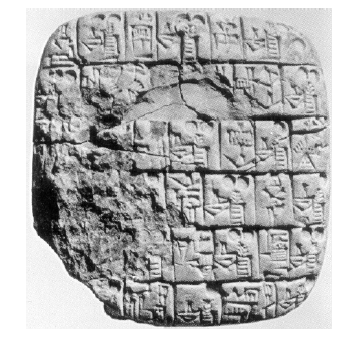 |
Since the Flood happened 3520±21 B.C., it seems probable that the invention of textual writing was made only a century or two before the Flood. Thus, the Genesis Flood narrative may have been preserved in written form, in Sumerian cuneiform on clay tablets, right from the start, but the earlier historical narrative in Genesis—Genesis chapters 1–5—must necessarily have been transmitted orally from generation to generation prior to its eventual transcription, probably within a few centuries of the Flood.
This deduction finds considerable support from the form of the Genesis narrative itself. Notice, for example, the changing terseness of the narrative. The first five chapters (Genesis 1–5) cover fifteen centuries of history. The next six chapters (Genesis 6–11) cover just five centuries. And the entire remainder of the book—thirty-nine chapters (Genesis 12–50)—cover somewhat less than three centuries.
I suggest that the practical reason the first fifteen centuries of the narrative are so very terse relative to the closing three centuries of the Genesis narrative is simply that it is a great deal more difficult to archive and transmit large quantities of information via memorization than it is to do so by writing—as we all know from personal experience.
Earliest Textually Composed History
Figure 5: A chronology of the composition of the Genesis historical narrative, and of the probable media used in composition and transmission of that narrative.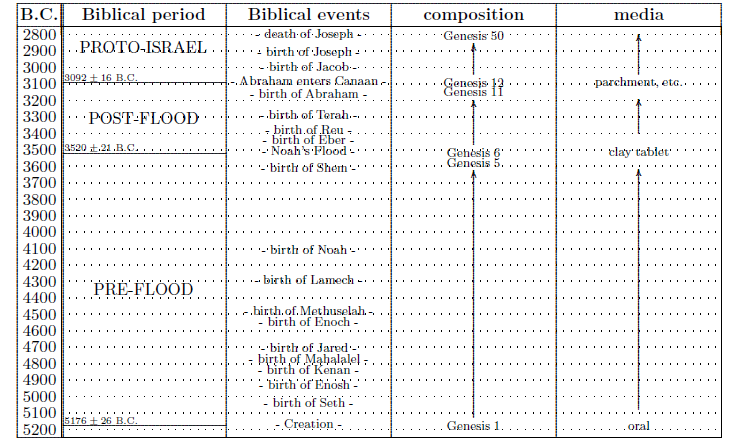 |
I would go on to suggest that the increased wordiness seen in Genesis 6–11 relative to Genesis 1–5 (roughly a factor of three) is not mere happenstance either. We have just seen that the invention of written texts only just predates the Flood. Genesis 6 begins the narrative of the Flood. I suggest that the Flood narrative is, in fact, the earliest historical narrative in the Bible to have been directly written down, without having first been preserved in oral form.
The nature of the Biblical Flood text supports this suggestion. It does not have the feel of epic poetry about it. Rather, with its carefully recorded calendar of events and observations throughout the year of the Flood, one feels they are reading a personal journal—a diary, a ship's log, and a science lab notebook together in one.
Change of Medium
To this I would add the further hypothesis that Genesis 6–11 is as terse as it is relative to the final thirty-nine chapters of Genesis because of the practical limitations imposed by transmission of writing on clay tablets. Clay tablets have the great advantages of being readily obtainable, extremely durable once they have been fired, and of the writing they contain being all but immutable. But they have the great disadvantage of being rather bulky. The number of words per unit of volume (or unit of mass) one can store on clay tablets is very much less than the number of words per unit volume (or mass) one can store on parchment or papyrus. I suggest that from Genesis 12 onward the first-hand recording of the Biblical historical narrative was no longer constrained to the medium of clay tablets, but rather began to make use of less bulky media, such as parchment. That this change of writing medium should happen beginning at Genesis 12, which records the move of Abraham from (initially) Ur in Mesopotamia, the homeland of the clay tablet, into Canaan, seems also not mere happenstance to me.
Facts of Oral Transmission
Now I must write a few words about oral transmission, to correct a common misapprehension in regard to it, before closing.
"The True Story"
The misapprehension is over the accuracy of information transmitted orally. Doesn't the hypothesis of oral transmission of the first five chapters of Genesis imply that the Creation account we have in Genesis 1, for example, must not be very reliable, after fifteen centuries of oral transmission? And how could one ever hope the detailed, lengthy, seemingly low-intrinsic-interest genealogical list of Genesis 5, with all of its numbers and names (so critically important to Biblical chronology), to be accurately transmitted orally from generation to generation?
Some objective light can be shed on such questions by making use of data gathered on the actual practice of oral transmission in preliterate cultures in the modern world. What one finds from such studies, in fact, is that a very high premium is placed on accurate oral transmission—on relaying "the true story"—as the following quotes illustrate.
The ideal is to sing correctly, not only as you heard it, but as it happened: [bard/singer]
… by Allah, I would sing it just as I heard it, whatever was worth while; what's the good to change or to add. No sir.[scholar/interviewer]
Why isn't it good?
[bard/singer]
It just isn't good to sing about what didn't happen, but one should sing it exactly as it happened.
… the strong insistence on correctness originates in the interest in the true story [emphasis in original]; the song is considered primarily as a vehicle of information on events in the past.[11]
All the odds are against creativity, even if the scholars [conducting the interviews] are for it. The singers are full of pride and self-respect, but they do not claim any kind of originality, not even in details; on the contrary, they categorically label any change as a mistake. … As a rule the singers know from whom they learnt any given song, and they never claim to have made the songs themselves. The ideal of originality is non-existent; it would clash with the dominant ideal of the true story. The six singers are unanimous in repudiating originality, and this seems to have been general in Parry and Lord's experience.[12]
He [J. B. Hainsworth] points out that Odysseus' praise of Demodocus [in the ancient Greek epic, Odyssey] is very close in meaning to the Yugoslavian bards' ideal of singing "just as it happened" without contaminating things.[13]
Both scenes are expressive of how dominant is the ideal of the true story in the oral epic poet's understanding of the art.[14]
As in the case of Parry's Serbian singers, the quality that is explicitly praised is the true story [emphasis in original].[15]
We obviously must not think of ancient oral transmission as something akin to the modern gossip-line. Far from it. Highest value was placed on transmitting "the true story".
Catalogs
But what about the catalog of names and numbers found in Genesis 5—this difficult ten-generation genealogy? What bard would wish to sing such a low-drama mass of fact? And, with the audience presumably bored and half asleep, who would ever have noticed whether he got it right?
Catalogs of information are a common and important part of orally transmitted histories. Indeed, the presence of this catalog in Genesis 5 does much to strengthen the case for oral transmission of the first five chapters of Genesis of which it is an integral part. This list of names and ages is precisely the sort of thing one finds in orally transmitted histories. And we find, much to our surprise, that rather than being bored by such catalogs, preliterate audiences are enthralled with them.
A catalog with its compact mass of fact is the most admired part of a singer's repertoire, the part that is most demanding of memory and control of the material. It is a tour de force, and the audience react to it as such.[16]
G. Jachmann thought the catalog to be the poorest, latest part of Homer. On the contrary, to an aural audience it would be the most impressive part, demonstrating the supreme technique of the singer, and giving information of the highest importance.[17]
Conclusion
The assertion that there is not "in the Hebrew Bible written material that can be proven to be earlier than the ninth or eighth century [B.C.], except for vague memories, myths and folk tales" is, I suggest, simply wrong. The sum total of the evidence emanating from present-day work in the field of Biblical chronology leads to the conclusion that the Bible preserves text which is very nearly as old as the invention of textual writing itself. The earliest Biblical text dates back to at least 3500 B.C. Beyond this the Bible appears to preserve an orally transmitted historical record stretching back to the dawn of Creation, somewhat prior to 5000 B.C. ◇
Readers Write
Dear Dr. Aardsma,
My main reason for writing this letter is to comment on your lead article in the latest BC issue. …
We can agree that God can create a one-year-old cat, a twenty-year-old cat, a twenty-hour-old kitten, or whatever other age He prefers. We can also agree that a statement of the true virtual age of such a cat can be reconciled with a claim that the created cat came into existence much more recently than its virtual age would suggest. Therefore, we can also agree that the virtual age of the earth really cannot contradict our claim that it was created only a few thousand years ago.
The point on which we apparently disagree is your claim, "… modern science finds that the data from all fields shows that all living things, including humans, have come about naturalistically by a process of evolution".[18] I believe your created cat analogy can easily be extended to explain my reason for disagreeing.
Suppose we have a contest where people are challenged to guess the age of the created cat. We want some exact figure, say a number of days, so this contest would be a bit like the ones where you guess the number of beans in a jar. "At least a year old"[19] would not be exact enough. Now further suppose that many people participate [in this contest], from a wide range of backgrounds. One is a veterinarian who wrote a book on the life cycle of cats. Another is a kid growing up in a city environment without ever having seen any animals, except for an occasional bird flying overhead, so this created cat is the first cat he has ever seen. A host of other contestants fall between them on the spectrum of cat knowledge. I think we can already agree to expect a good scatter of virtual age estimates, with the one from the veterinarian being much closer to the age God determined than the estimate from the city boy, barring a lucky guess.
So what does this have to do with your position? "Neither the Bible nor science is telling a lie. Both descriptions are valid in their proper context and each needs to be accepted in its proper context without denigrating the other, just as in our created cat example".[20] "If a veterinarian examines our created cat, and informs us the cat is over a year old, will they [Christians who do not trust radiometric dating – T.G.] also say that the vet's method of estimating the age of cats is unreliable?"[21] To extend your thought experiment, let's ask ourselves which entry in the cat age guessing contest is most analogous to the position taken by "science" on the age of the earth.
I would like to suggest that your comparing the position of science to the vet's entry puts it in a far better light than it deserves, and even comparing it to the city boy's entry would be much too generous, since not even he would enter an estimate millions of times his own age. Science has never watched a planet age for billions of years, and no one has ever witnessed abiogenesis where a naturalistic process of evolution produces life all by itself. A veterinarian should know quite a bit about cat development through personal observation, so yes, his estimate should be reliable, but the same cannot be said for the age estimates of evolutionists who pretend to know how long ago the earth and life forms on it came into existence.
I would rather say that "modern science" (as presented by evolutionists) only claims and hopes—not "finds"—that all fields show that all living things, including humans, appeared naturalistically by a process of evolution. Some of its pontifications can easily be recognized as quite speculative and completely unworthy of our trust, even without any appeal to the notion that they must be wrong because they contradict the Bible. Modern science might be able to find physical evidence for evolution during many billions of years of existence, but I believe a good case has yet to be built for this view, even though it is quite politically correct in our day. Even if such a case could be built, it cannot really contradict the Biblical teaching about a young earth, as you pointed out, but in the meantime, we have no reason to jump credulously to the conclusion that evolution is a fact, even just in virtual history. What reason do we have to believe this story? The truth matters.
Your statement painted the controversy with a broad brush, and so did my reply. In reality, there are degrees of reliability among the pronouncements coming from evolutionists. When they talk about what happened ten thousand years ago, they may be on much firmer ground than when they talk about what happened ten billion years ago. I think we can suspect they may finally be onto something when we can rest assured that their presuppositions are correct.
Consider the issue of transitional forms. If a natural process of evolution should be accepted as an established fact of virtual history, then there ought to be thousands of nice series of life forms in the fossil record showing how one kind of plant or animal evolved into a quite different kind, with series that also branch nicely from a primitive root to form a family tree. Ask an evolutionist to show you one, and you will get either a series with quite different forms at the endpoints but huge gaps in between, or else you will get a nicely graded series with tiny gaps but endpoints that are very closely related, say a clam with one shape or size at one end, and a clam with another shape or size at the other. Where are the convincing series that their theory predicts? Someone may charge that I am just too skeptical, but I am not buying this story. The evolutionists may not exactly be lying, but I have concluded that they are either ignoring the creationist arguments, fooling themselves, or perhaps letting themselves be blinded by academic or professional peer pressure.
Thomas James Godfrey
Blacksburg, VA
Dear Tom,
Your second paragraph explains that you are in agreement with most of my article, so we are only discussing minor potential differences here, not a major disagreement over the whole concept of virtual history.
The points of minor potential difference are your feeling that I have given 1. radiometric dating, and 2. evolution more credit than they deserve. (You have tended to mix these two together in your comments. I would encourage you to separate them out one from another. They are, in fact, two separate areas of science, carried out by scientists with different backgrounds and different interests. In a university setting, radiometric dating is likely to be found going on in the geophysics department, where rocks and radioactive decay are the items of interest, while research into biological evolution is likely to be found going on in the biology department.)
We have a genuine difference of opinion in regard to the credit due to radiometric dating. You have argued that scientists' lack of first-hand observational knowledge of how planets develop with time reduces the reliability of their conclusions regarding the age of planets nearly to zero. I can find no valid epistemological basis for this view. Does the fact that no judge ever has first-hand observational knowledge of the murder cases he judges reduce the reliability of his conclusions regarding these murder cases nearly to zero?
I think the second potential difference, over my view of the validity of evolution, is more perceived than real—I think you have misunderstood the sentences from my article you have taken exception to.
But before I get into this let me discuss one bit of semantics from your letter. This is from the sentence, "Even if such a case [for evolution during many billions of years] could be built, it cannot really contradict the Biblical teaching about a young earth, as you pointed out, …".
I would not like readers to go away supposing that I believe the Bible teaches a young earth. The Bible teaches no such thing. The Bible teaches a recently created earth (if we may take the liberty of calling something which happened over seven thousand years ago 'recent'), and this is not the same thing as a young earth, by any means. Unfortunately, "young earth" and "recent creation" have often been used as synonyms in creationist literature, and I suspect that this habit of imprecise usage is the cause of the appearance of "young earth" in your letter.
To be perfectly clear, my position is that the Bible teaches the earth, and the universe of which it is a part, were created a little over seven thousand years ago. The Bible does not teach that the earth or the universe appeared "young" when newly created. The Bible does not address the issue of the apparent age of the earth or the universe following Creation. The Bible does teach that Adam and Eve were not young (i.e., babies, or perhaps better, newly fertilized single cells) when they were created, both by the use of the words "man" and "woman" in reference to them, and by the husband-wife relationship which existed between these first two humans from the beginning. So there is good Biblical reason to be skeptical of the extra-Biblical assumption that the earth was young when it was created.
Judging soberly, by all available scientific data bearing on the question of the age of the earth and universe, we are living on an old earth in a very old universe. (The use of the word "old" in this context is not meant to imply "about to expire" but only the idea of age measured in billions of years.) Putting what the Bible actually teaches together with what we may deduce from overwhelmingly abundant scientific data leads to the conclusion that we are living on an old earth which was only recently created.
Thus, my position is that we are living on an old earth which is part of a very old universe which was created in its entirety by God out of nothing only a little over seven thousand years ago. This should properly be called the "recent creation" position; it should not be confused with the "young earth" position which teaches that the earth (and universe) should appear to be just thousands of years old today. I know of neither Biblical nor scientific data in support of the "young earth" doctrine, despite decades of deliberate, personal investigation into the matter, so I do not wish to seem an adherent or proponent of this doctrine.
The Credit Due Evolution
Now let me tackle your concern regarding evolution. You feel my statement, "… modern science finds that the data from all fields shows that all living things, including humans, have come about naturalistically by a process of evolution", gives evolution too much credit—or, perhaps, too much credence. I think you have misunderstood me. I meant this as a factual summary of where science presently is at in its collective thinking—of what you will find if you open any standard college science textbook these days on the subject of human origins—not as a declaration of known truth emanating from science. I have previously stated my position on the very points you have raised in regard to evolution, and my position has not changed. Here is what I have previously said, with some bolding to highlight the most pertinent statements in the present context:[22]
Third and final, Christians need to stop squandering time and energy deriding evolution. The Bible says evolution didn't happen, not that it couldn't happen. The Bible says "In the beginning God created the heavens and the earth"[23], not "In the beginning God evolved the heavens and the earth". So the fact that we got here by supernatural Creation is plain and settled. But evolution is still a perfectly legitimate scientific hypothesis of virtual history in proleptic time. Now please note that I did not say amoeba to man evolution is what virtual history shows. In point of fact I seriously doubt that amoeba to man evolution is what virtual history actually shows. I am trying to convey that the truly fascinating question now is what it is that virtual history really does show, in sharp contrast to the purely negative exercise of trying to prove that the data of virtual history do not show evolution.The linchpin of evolution has been the belief that Biblical chronology and Biblical history have been falsified. That is, the linchpin of evolution has been the belief that supernatural Creation has been shown to be false. This has seemed to leave naturalism in possession of the entire playing field. As long as naturalism has had possession of the entire field, evolution has necessarily been the only game allowed. But we now understand that Biblical chronology and Biblical history have not been falsified. The linchpin of evolution has, in fact (whether any evolutionists ever admit it or not), been pulled. That being the case, Christians need to get involved in the exploration of virtual history in a positive way, formulating and testing other hypotheses of organic relationships in virtual history. They are the right ones to do this work; they are the ones whose eyes are now wide open.
Real history, the Bible informs us, is a mixture of natural and supernatural events. It would, therefore, not be surprising to find that virtual history was also such a mixture. Perhaps this is the true lesson to be learned from the systematic absence of transitional forms between fossil kinds. Perhaps this is the true lesson to be learned from the complete failure of modern science to demonstrate a naturalistic origin of the living cell. The field is wide open. It is time to stop the negative exercise of beating up on evolution. It is time for the positive exercise of finding out the truth about virtual history to begin.
Well, I still feel as strongly about all of this as I did when I first wrote these words over three years ago. So you can see that I am not calling evolution a fact, by any means.
You are concerned about my statements: "Neither the Bible nor science is telling a lie. Both descriptions are valid in their proper context and each needs to be accepted in its proper context without denigrating the other, just as in our created cat example".
Please note the words "in their proper context" and "in its proper context" in these sentences. The context of the idea of evolution is not one of revealed truth from God. Rather the theory of evolution exists in a context of the fallible human enterprise we call science. I was trying, by these statements you are concerned about, to make the point that the reason scientists don't see supernatural creation seven thousand years ago when they peer into virtual history is not because they are lying about what they are seeing in virtual history. And the reason the Bible fails entirely to mention one hundred million year old dinosaur bones is not because the Bible is lying about the history of the earth. When I say that science is not telling a lie about evolution I do not mean it has hit upon the true theory of origins in virtual history; I mean it is advancing a valid attempt at a theory of origins in virtual history. The fact that we may find this theory inadequate in several ways relative to the data it purports to explain does not mean that those who favor the theory of evolution are evil liars. It means that we have a job to do—we need to get on with the job of improving on their inadequate theory.
Many Christians have been fighting evolution, as if it were the Devil himself, for over 100 years now. I feel your letter evidences this (extra-Biblical) tradition to some degree.
Evolution is not the Devil. I will not deny that the Devil has used the theory of evolution to destroy or neutralize the faith of many. But so he uses many things. Evolution is a scientific theory of virtual history.
The history of science reveals many scientific theories which, though they held sway for some period of time, were eventually shown to be wrong or incomplete. This is very likely to be the ultimate fate of molecules-to-man evolutionary theory as well. I am eager to see this fate overtake molecules-to-man evolution theory. But I am perfectly sure that no amount of beating up on evolution or evolutionists will bring this fate about. This fate will only come about as better explanations of the data from virtual history, with greater predictive power, are proposed. And this will only come about when talented men and women of science cease the negative exercise of disparaging one view of origins while championing another, and get on with the job of synthesizing the two into a more accurate whole.
Evolution theory supplanted the old-style creationism theory because old-style creationism was shown to be severely incomplete. Old-style creationism was oblivious of virtual history. For example, old-style creationism was taken by surprise by fossil dinosaur bones. When had these creatures lived and died? Science answered unequivocally: long, long before the Biblical date of Creation. This left old-style creationists in dismay. A furious activity of patching and stretching the old theory followed: perhaps the Biblical days of creation were each eons of time in reality; or perhaps there is a gap between Genesis 1:1 and Genesis 1:2; or perhaps science has misjudged the date of these fossils by a factor of twenty or thirty thousand(!), … And a furious activity of criticizing anything and everything about evolutionary theory grew up, until today it has become a tradition—a sacred right of fellowship in some circles.
But all of this criticism of evolution has done nothing to solve the inadequacies of old-style creationism—and never will! As C. S. Lewis put it in his preface to The Great Divorce, "A wrong sum can be put right: but only by going back till you find the error and working it afresh from that point, never by simply going on".[24] A vast flood of virtual history data has poured in over the decades—from 100 million years worth of radioactive decay in supposedly (according to Institute for Creation Research) post-Flood rocks,[25] to light from galaxies billions of light-years from earth.[26] And old-style creationism—with its misplaced devotion to the young earth doctrine, canonized misconception of the Flood, and blindness to virtual history—still has no scientifically defensible place to put any of these data.
It was inevitable that evolution would supplant old-style creationism under these circumstances. No scientific theory can withstand such a barrage of data, all fundamentally inexplicable within its established framework. And no amount of criticism of evolution or evolutionists will ever restore old-style creationism to ascendency again. Old-style creationism gives "a wrong sum".
Creation with virtual history shows how the "wrong sum can be put right". It reveals that evolution and old-style creationism are not contradictory theories about reality. Rather, they are complementary theories about reality. Evolution, we believe, has some serious inadequacies. But let us be fair and admit that old-style creationism has some pretty serious inadequacies too. Neither of these theories appears able to explain all available data by itself. But their unification—achieved in the theory of creation with virtual history—preserves all that is of value in both of these old theories, and offers new potential for moving far beyond either of these old theories to yet better explanations.
The old sum was wrong. We have gone back and found the error. Let us move forward with the task of working the sum afresh.
Gerald E. Aardsma, Ph.D.
Loda, IL
Dear Dr. Aardsma,
Am I to assume from your September/October 2002 issue of The Biblical Chronologist that you are saying that there is no examinable scientific difference between a cat that has been created five seconds ago and one that has grown up in the cold, cruel world for one year? Could we not examine its stomach to see if there is the remains of a mouse therein, or some other such test of bodily functions?
Mark Dagley
New Salem, ND
Dear Mark,
I once mentioned, in a seminar I was teaching, the idea that God could have created the world, with everything in it just as it now is, only ten seconds ago. I was trying to emphasize that He is able—big enough—to do such a thing.
One member of my audience went home and shared this idea with his nine- or ten-year-old daughter. Her response was an immediate, "No way—it couldn't have gotten this bad that fast."
Your question expresses the same basic thought. The idea behind it is that God would create all things good. Since the present state of this "cold, cruel world" can hardly be called good, it seems we should be able to tell the difference between things which have been newly created by God and those which have been around for a length of time.
I am in total harmony with the theological viewpoint which underlies this concern. That is, I accept the Biblical teaching that God created the world good, and that it has only come to its present state as a result of a historic Fall into sin by two historic representatives of mankind, Adam and Eve.
My created-cat thought experiment was only designed to help us recognize the essential nature of creation-type miracles—that they necessarily give rise to virtual histories. It left the issue of the Fall and its consequences aside. Your letter effectively asks for further clarification of the effects of the Fall and subsequent Curse.
I dealt with the Fall and Curse, in relation to virtual history, in my initial presentation of the idea of virtual history.[27] The essential point I tried to make was that the virtual history of the original creation would necessarily have been good, just as the original creation was good. Thus, originally created cats would not have had mice in their stomachs. But we don't get to see the virtual history of the original creation when we study the data of virtual history today. The Fall resulted in a Curse over the entire creation, subjecting the creation to futility, as Romans 8:20 teaches us. The Curse necessarily encompassed virtual history as well, subjecting it also to futility.
We must regard the Curse, then, as a creation-type miracle operative upon the entire cosmos. And in consequence of this, the virtual history of proleptic time which we now see must be regarded as an artifact of the Curse, not of Creation.[28]
So, to put my answer to your question in the simplest terms I know how, we fully expect that the cats God created on Day 6 of Creation Week had no remains of mice in their stomachs. But there is no reason why these same cats, emerging from the Curse subsequent to the Fall, should not have had remains of mice in their stomachs—just as Adam's garden emerged from the Curse with thorns and thistles growing in it. Since it is only these later cats that we can ever hope to learn anything about from the data of virtual history (from fossils of ancient cats, for example)—the (good) virtual history of the original creation having been displaced by the (futile) virtual history of the Fall and Curse—there is, it appears, no measurement science can make today to distinguish one of these originally created cats from any other cat in the fallen world today.
Gerald E. Aardsma, Ph.D.
Loda, IL
P.S. I have been teaching my own children, toddler through young adult in age, about creation with virtual history since I first came to understand it myself. I want them to grow up with a properly integrated view of the Bible and science—a view which disparages neither the Bible nor science, and which is able to handle the essential data from both the Bible and science with confidence and ease. And I want them to be equipped with a defense of their faith which is credible and functional in the modern world.
I have observed that my children have no difficulty catching on to the idea of creation with virtual history. They have little trouble understanding and accepting, for example, that dinosaurs are creatures of virtual history only, having never had any role in real history at all. This leads me to believe that there is nothing really difficult about the idea of creation with virtual history. Whatever difficulties we adults may experience trying to grasp this idea evidently spring from a lifetime of miseducation, not from any intrinsic abstruseness. (I am reminded of the terrible difficulty everybody had with the idea that the earth went about the sun, rather than the sun about the earth, back at the time of Copernicus; and of the great theological difficulties some had with the idea that there should be craters on the moon back at the time of Galileo.)
Recently my seventeen-year-old, home-schooled daughter, Laura-Lee, was required by her teacher (my wife) to write a brief essay on virtual history. Here is what she wrote.
Virtual history is what is found when one researches a created object. Real history, on the other hand, is the history of what really happened to the created object.
Let me use an example to clarify this theory. There is a magician, dwelling high in the mountains, and he decides to create a town for the sake of his own amusement. Down in the little valley he creates a small town, bustling with energy and productivity. This town would be the essence of virtual history. The children walking to school would look to be children just like any other children—children that had been born and lived for several years. The teachers in the classroom would teach just as though they had been through years of training. Men would hop in their cars—cars that looked as though they had been driven for years—and go to work at companies that would seem to have taken decades to grow to that size. The town itself would look like the work of generations. In fact, the old men sitting in the general store playing checkers are even now spinning yarns of the town back in the golden years.
How could the children be walking to school, teachers be teaching, men be working, and yarns be being spun if it was all just created a few seconds before by the magician on the mountain? What most people fail to realize is that there was no mention of the magician creating the town new and fresh. He wanted the town, and he didn't want to have to go to all the work to build it up from the ground. He wanted it now, and he wanted it complete and whole. And so he made it that way, and by making it that way he created it with a virtual history—a history that appeared to be what had happened, but wasn't what had happened at all. And nobody but the magician on the mountain will know how the town really got there no matter how much they study the history of the town in the valley.
Would historians be in the wrong if their history of the town went back hundreds of years, or would the magician be mistaken to say that it had only been there for a matter of seconds? After all, you can't have two different answers to the same question… or can you? ◇
Research in Progress
Research at present is entirely devoted to solving the mystery of why human life spans declined by hundreds of years following the Flood. This problem has absorbed my attention more or less completely nearly every waking moment for the past three years.
I have published in previous issues all of the groundwork I am free to publish on this topic.[29] In the cover letter sent out with the last issue I explained:
I have very much more that I am longing to share with you on this research topic, but I have reached a stage where it is difficult to tell more without telling all, and I am reluctant to tell all before I am quite certain I am right about the cause of aging and have had opportunity to apply for appropriate patents, necessary to the maintenance and progress of this unique "tent-making" ministry. This may take some months yet—I beg your patience and covet your prayers in the meantime.
This has placed me in a bit of a dilemma for several months now. The Biblical Chronologist exists to archive and publish current research in the field of Biblical chronology. Since, as best I can tell, I am the only research scientist in the world at present who is making anything like a full time effort in this vital field, The Biblical Chronologist has in the past necessarily drawn the great majority of its articles from my personal research. But now, for the first time, I have come to a place where I need to delay further publication of my research findings. My dilemma has been to determine what, then, is there which I can communicate to my friends and readers in The Biblical Chronologist.
There are, I feel, a very large number of interesting and informative articles which could be researched and written in this field at present. But I must say straight out that I do not feel good in my conscience about setting aside the longevity research for even a moment to work on other topics, no matter how intrinsically good they may be. If a medical researcher thought he was on the verge of discovering a cure for cancer, would it be morally right for him to set his cancer research aside for a time to pursue other interests, while thousands were dying of cancer every day? If you have followed my articles on aging to the present time you will understand that discovery of the cure of aging is of much broader humanitarian concern even than a cure for cancer.
Accordingly, I have determined to suspend publication of The Biblical Chronologist for one year—to publish no issues in 2003. I plan to resume publication on the normal schedule in 2004. I am hoping this will give me enough time to bring the longevity research to a definite conclusion. ◇
The Biblical Chronologist is a bimonthly subscription newsletter about Biblical chronology. It is written and edited by Gerald E. Aardsma, a Ph.D. scientist (nuclear physics) with special background in radioisotopic dating methods such as radiocarbon. The Biblical Chronologist has a threefold purpose: to encourage, enrich, and strengthen the faith of conservative Christians through instruction in Biblical chronology, to foster informed, up-to-date, scholarly research in this vital field within the conservative Christian community, and to communicate current developments and discoveries in Biblical chronology in an easily understood manner.
An introductory packet containing three sample issues and a subscription order form is available for $9.95 US regardless of destination address. Send check or money order in US funds and request the "Intro Pack."
The Biblical Chronologist (ISSN 1081-762X) is published six times a year by Aardsma Research & Publishing, 412 Mulberry St., Loda, IL 60948-9651.
Web address: www.biblicalchronologist.org. Copyright © 2002 by Aardsma Research & Publishing. Duplication or distribution in whole or in part by any means electronic or otherwise is strictly prohibited without written permission from the publisher. |
Footnotes
^ Hershel Shanks, "A "Centrist" at the Center of Controversy," Biblical Archaeology Review 28.6 (November/December 2002): 44.
^ Gerald E. Aardsma, "The Cause of Noah's Flood," The Biblical Chronologist 3.5 (September/October 1997): 1–14.
^ Gerald E. Aardsma, "Space Rock Impacts and Noah's Flood," The Biblical Chronologist 4.2 (March/April 1998): 1–11.
^ Gerald E. Aardsma, "The Ark on Ararat?" The Biblical Chronologist 3.2 (March/April 1997): 1–12.
^ Gerald E. Aardsma, "The Opening Minutes of Noah's Flood at Céide Fields, Ireland," The Biblical Chronologist 5.6 (November/December 1999): 7–10.
^ Gerald E. Aardsma, "The Cause of Noah's Flood," The Biblical Chronologist 3.5 (September/October 1997): 13.
^ My more recent work on the cause of reduced life spans following the Flood has uncovered further telling evidence of this same sort. I am not free to share the details of what I know in this regard at this time, but I hope to do so in the not too distant future.
^ Hershel Shanks, "Is the Bible Right After All?" Biblical Archaeology Review 22.5 (September/October 1996): 34–36.
^ Thomas James Godfrey, "Earliest Writing Confirms Missing Millennium," The Biblical Chronologist 7.6 (November/December 2001): 1–6.
^ Gerald E. Aardsma, "Toward Unification of Pre-Flood Chronology," The Biblical Chronologist 4.4 (July/August 1998): 7.
^ Minna Skafte Jensen, The Homeric Question and the Oral-Formulaic Theory, (Copenhagen: Museum Tusculanum Press, 1980), 65–66.
^ Minna Skafte Jensen, The Homeric Question and the Oral-Formulaic Theory, (Copenhagen: Museum Tusculanum Press, 1980), 68.
^ Minna Skafte Jensen, The Homeric Question and the Oral-Formulaic Theory, (Copenhagen: Museum Tusculanum Press, 1980), 70.
^ Minna Skafte Jensen, The Homeric Question and the Oral-Formulaic Theory, (Copenhagen: Museum Tusculanum Press, 1980), 71.
^ Minna Skafte Jensen, The Homeric Question and the Oral-Formulaic Theory, (Copenhagen: Museum Tusculanum Press, 1980), 72.
^ Minna Skafte Jensen, The Homeric Question and the Oral-Formulaic Theory, (Copenhagen: Museum Tusculanum Press, 1980), 74.
^ Minna Skafte Jensen, The Homeric Question and the Oral-Formulaic Theory, (Copenhagen: Museum Tusculanum Press, 1980), 79.
^ Gerald E. Aardsma, "The Age of the Earth, Virtual History, and Hebrews 11:3," The Biblical Chronologist 8.5 (September/October 2002): 2.
^ Gerald E. Aardsma, "The Age of the Earth, Virtual History, and Hebrews 11:3," The Biblical Chronologist 8.5 (September/October 2002): 1.
^ Gerald E. Aardsma, "The Age of the Earth, Virtual History, and Hebrews 11:3," The Biblical Chronologist 8.5 (September/October 2002): 2
^ Gerald E. Aardsma, "The Age of the Earth, Virtual History, and Hebrews 11:3," The Biblical Chronologist 8.5 (September/October 2002): 3
^ Gerald E. Aardsma, "A Unification of Pre-Flood Chronology," The Biblical Chronologist 5.2 (March/April 1999): 17–18.
^ Genesis 1:1.
^ C. S. Lewis, The Great Divorce, (Glasgow: William Collins Sons & Co., 1946, Fontana Books, 14th impression June 1983), 8.
^ Andrew A. Snelling, "Radiohalos—Significant and Exciting Research Results," Impact 353 (November 2002).
^ Richard Niessen, "Starlight and the Age of the Universe," Impact 121 (July 1983).
^ Gerald E. Aardsma, "A Unification of Pre-Flood Chronology," The Biblical Chronologist 5.2 (March/April 1999): 1–18.
^ Gerald E. Aardsma, "A Unification of Pre-Flood Chronology," The Biblical Chronologist 5.2 (March/April 1999): 11.
^ Gerald E. Aardsma, "The Cause of Reduced Post-Flood Life Spans – Part I," The Biblical Chronologist 7.2 (March/April 2001): 1–6; Gerald E. Aardsma, "The Cause of Reduced Post-Flood Life Spans – Part II," The Biblical Chronologist 7.4 (July/August 2001): 1–7; Gerald E. Aardsma, "The Cause of Reduced Post-Flood Life Spans – Part III," The Biblical Chronologist 7.5 (September/October 2001): 1–5; Gerald E. Aardsma, "The Cause of Reduced Post-Flood Life Spans – Part IV," The Biblical Chronologist 8.1 (January/February 2002): 1–8; Gerald E. Aardsma, "The Cause of Reduced Post-Flood Life Spans – Part V," The Biblical Chronologist 8.3 (May/June 2002): 1–4.



